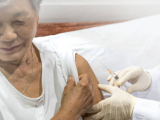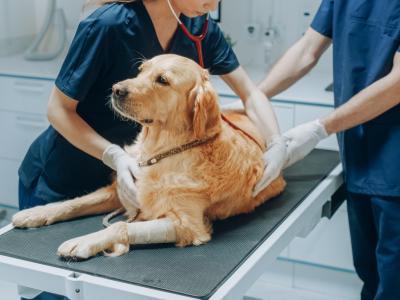To avoid the world being empty-handed again when the next disease threat such as Ebola strikes, a trio of vaccine experts today called for establishment of a $2 billion global fund to help researchers navigate the complex, costly development process.
Such a fund would move vaccines for diseases such as Middle East respiratory syndrome coronavirus (MERS-CoV) from the laboratory to initial human trials, a period some have called the "valley of death," a time when momentum stalls from a lack of resources, as occurred in the wake of West Africa's Ebola outbreak.
Writing in the New England Journal of Medicine today, the experts wrote that the fund would be a safety net to avoid a repeat of what happened in the Ebola outbreak, when no vaccine was available despite at least seven candidate vaccines having shown promise in animal trials.
The lead author of the commentary is Stanley Plotkin, MD, who helped develop many vaccines, including one for rubella, and is a professor of pediatrics at the University of Pennsylvania. He is joined by Adel Mahmoud, MD, PhD, who helped develop vaccines for Merck and is now at Princeton University, and Jeremy Farrar, MD, PhD, Wellcome Trust director. Plotkin and Mahmoud are also with the Foundation for Vaccine Research, a privately funded group based in Washington, DC, that seeks to increase funding for vaccine research.
Drug-development hurdles
Main vaccine development challenges include complex disease targets, a shrinking number of companies that have the resources to get the products through licensing, and a business model that favors products that could pull a big market share. The experts pointed out that there are only four major companies that focus on vaccine development and that capital investment for just one vaccine can range $500 million to more than $1 billion.
In 2012, a report on the need for game-changing flu vaccines by a group headed by CIDRAP cited the "valley of death" as an obstacle to getting more potent flu vaccines to market. It defined the valley of death as the time when substantial research, development, and licensure costs are accruing, but no revenue is coming in.
The authors of today's commentary noted that groups have marshaled major funding toward vaccines for major diseases such as human immunodeficiency virus (HIV), tuberculosis, and malaria, and for pediatric vaccines. However, they said vaccines against some infectious diseases are badly needed and feasible, such as Ebola, chikungunya, MERS-CoV, severe acute respiratory syndrome (SARS), West Nile virus, and Lyme disease.
Vaccines against those and other diseases currently aren't prioritized by governments or the markets for them are too small to merit capital investment, they wrote, adding that there is also a growing need to improve older vaccines, such as those for pertussis and influenza, due to efficacy problems.
Contributions and review process
Contributions could come from governments, foundations, the pharmaceutical industry, and perhaps from other stakeholders such as the insurance and travel industries, the team suggested.
The authors envision that proposals for support from the global vaccine fund would be reviewed by an independent panel of scientists and funders, and grants could be renewed based on milestone achievement and grant performance, which would be monitored by independent auditors.
Early support from the proposed vaccine fund could perhaps allow production of a small stockpile, possibly for emergency use, the team suggested.
"The lesson we take from the Ebola crisis is that disease prevention should not be held back by lack of money at a critical juncture when a relatively modest, strategic investment could save thousands of lives and billions of dollars further down the line," they wrote.
See also:
Jul 23 N Engl J Med report
October 2012 CIDRAP Comprehensive Influenza Vaccine Initiative (CCIVI) report





















